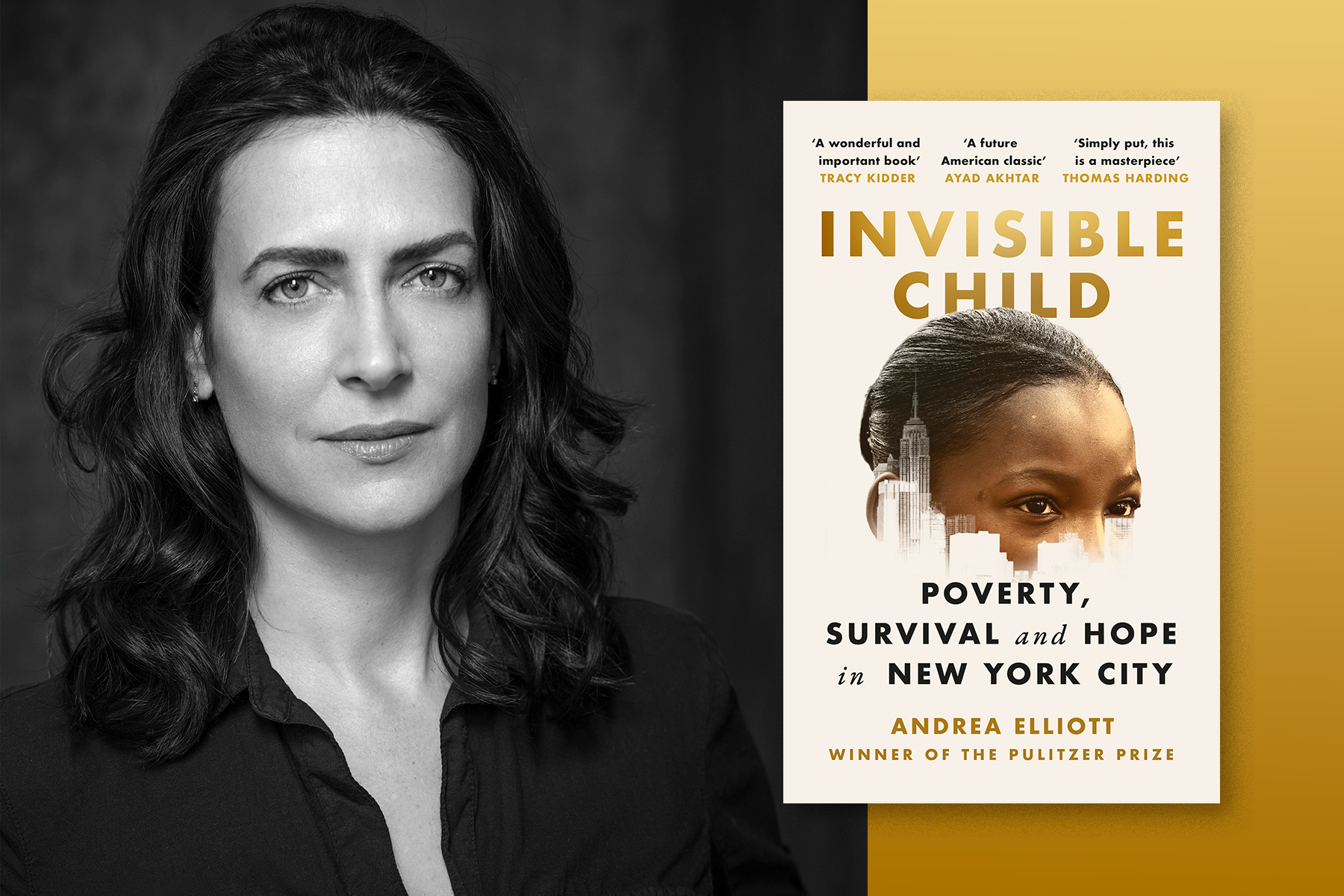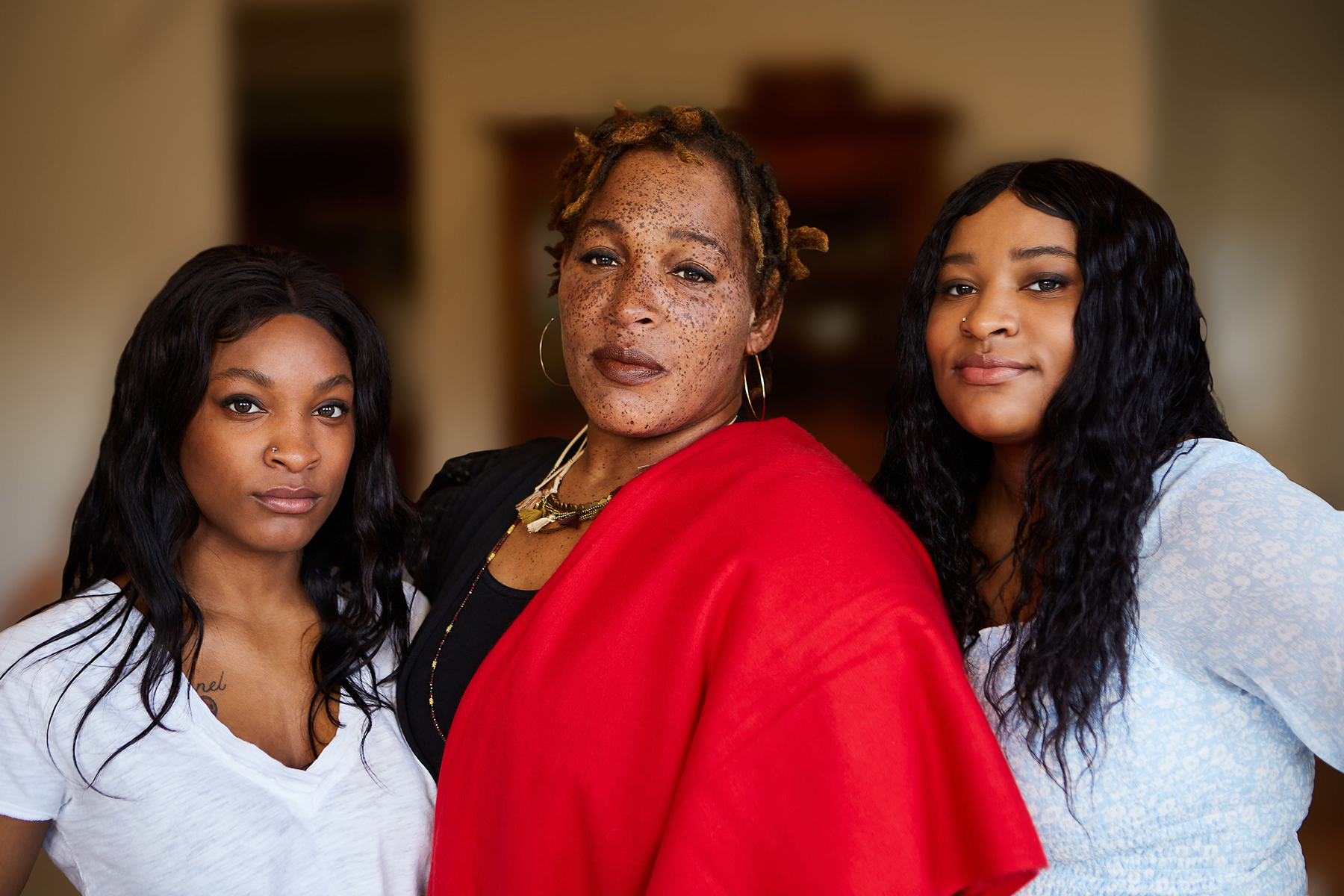
- Home |
- Search Results |
- How I Wrote It: Andrea Elliott on Invisible Child
How I Wrote It: Andrea Elliott on Invisible Child
Pulitzer Prize-winning journalist Andrea Elliott tells us about following one family across New York as they grappled with homelessness, addiction and poverty for Invisible Child, a book that’s seen her win comparisons to George Orwell.
Andrea Elliott has been a journalist for 23 years, but no story, she says, has “taken possession of me like this one.” That story would be of Dasani Coates, an 11-year-old girl who Elliot meets in Fort Greene, Brooklyn, outside Auburn Family Residence, “a decrepit city-run shelter for the homeless”. This, Elliott writes in Invisible Child, is her home. It is also “a place where mould creeps up walls and roaches swarm, where faeces and vomit plug communal toilets, where sexual predators have roamed and small children stand guard for their single mothers outside filthy showers”.
Over the next eight years, Elliot immersed herself in the life of Dasani, her seven younger siblings and their parents, Supreme and Chanel. She follows them as they are shuffled between homeless shelters, assessed by social and welfare services and attempt to, more often than not, simply survive when the most basic needs of life – food, shelter, health – can’t be taken for granted. Dasani and her siblings face their greatest test when they are separated from their parents and from each other, landing in foster care.
Invisible Child charts their story and examines the repeated institutional failures of government services over 600 gripping pages. Critics have called the book “A classic to rank with Orwell”; Barack Obama included it on his 2021 reading list. To read Invisible Child is to be understand the lives that are all too often invisible: Dasani is among 22,000 homeless children in New York. We spoke to Elliot about the extraordinary process of writing it.
Where did this story originate?
My path to Dasani began with a statistic: One in five American children were growing up in poverty. This was a population of 16 million children, here in a country with the highest child poverty rate of all wealthy nations. Any one of those facts would have led me to the Brooklyn shelter where I met Dasani and her family in October 2012. But what kept me in their lives, over the next eight years, was the power of their story.
How much time did you spend with Dasani’s family over the years?
I didn't really approach it as if I needed to be there X number of hours. I surrendered myself to the process of deep immersion, which is that you don't know what's going to happen. The more spells of time you spend – a weekend, sometimes, entirely with them in their home – the greater your understanding becomes, the greater your chances are of seeing things that are extraordinary. I have over 90 notebooks, 132 hours of recorded audio, 28 hours of video. I was deeply immersed in their lives. The longest I went without talking to them was maybe a week or two. They were just a daily part of my life.
When my literary agent read drafts, she would say: “It’s like you’re everywhere, all the time”. What enabled me to do that was cell phones, their own audio and just technology in a way. But I was either in Staten Island or Hershey [Pennsylvania] constantly, and when something major happened in either place, I was immediately trying to figure out what was happening in the other place because I knew that contrast was an important part of the story.
Invisible Child is meticulous in documenting the inner workings of the the family’s life – the court orders, the welfare visits, the food stamps. What was the process of including that?
Records were hugely instrumental to this. I have more than 14,000 records that, with the family's help, I gathered and pieced together. I was constantly trying to document what I was seeing in a colour-coded timeline. It wound up filling an entire wall: government policy was in grey, family events were in yellow, Dasani was regular print, things that happened to Supreme were red, things that happened to Chanel were green. I would just plug in the major events from each day, and then I would start to see patterns or narrative threads that made the story propulsive.

That must have been crucial in shaping so much information into a story
That timeline was really important. Because when I was reporting the book, everything seemed dramatic. It was that constant feeling of a runaway train. I was entering into lives of uncertainty and trauma... It's not even that major events were always happening, it was the foreboding: what's going to happen next, you know? Is it going to be that they're hungry? Is it going to be that the lights have been turned off? Is it going to be that somebody on the street pulled out a gun?
I see this book as an act of witness more than anything else
That can become overwhelming to the work of writing a story, because you just don't know how to structure it in a way that is not exhausting or doesn't feel like a catalogue of sorrows. This, I think, is not just a book of despair or suffering but of so much joy and love as well. There's light and dark. And so choices had to be made.
What was it like to write the book, having become so enmeshed with the family?
I felt that the quality of the storytelling - which mattered hugely to me because the story is so important, and I wanted it to stay with people – either would rise or fall on the level of intimacy that I allowed myself to feel for what I was seeing. But that does not take away from my ability to be analytical, to step back, to assess the facts. I was very careful to be balanced in terms of the treatment of the facts but I don't believe there's balance when it comes to emotion: you feel what you feel and my ultimate hope was to transport the reader into a world that I was in. I see this book as an act of witness more than anything else.
What happened when Dasani first read Invisible Child?
I brought them to the farm where I was born, a place of peace and solitude. They knew that they were there to help me factcheck, and over the course of five days, I read the book to them paragraph by paragraph. I wanted for them to know what was in the book and to experience their reaction and be there for them through the hard parts. I also didn't want them to read it alone. It was very, very hard. There were a couple moments where we all broke down crying. They needed each other through that process.
But there was a lot of laughter: when we got to the very end of the five days I asked Dasani to read the last two paragraphs. And so she got to the last line and said 'That's it? That's the end?' and I said yes, and she jumped on top of my dining table and started dancing! And it's not because she loved my writing. It’s because she was so relieved! Nothing in the book surprised them but there was some fine-tuning that happened at the very end which was good. It just made it stronger to my mind. I felt like it was something that I owed to them.
And how’s Dasani doing now?
After a long court battle, Dasani, Avianna and Papa – three of the children – were reunited with Chanel, their mother and they are now living in a rental in the Bronx. They have stable housing. They're together. It's unsurprising and yet utterly striking how much better the children are now that they're with their mother again, and that they are in stable housing. Mom is working for UPS. Dasani became the first child in her immediate family to graduate from high school and enroll in college. She's in the CUNY system at LaGuardia Community College, studying business administration. They’re on an upswing.
What did you think of this article? Email editor@penguinrandomhouse.co.uk and let us know.
Image: Nina Subin